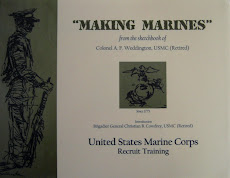by Andy Weddington
Sunday, 01 January 2017
Artist are just children who refuse to put down their crayons. Al Hirschfeld
IE or EA?
Both.
The connection?
Crayola crayons - two boxes gifted at Christmas.
Daily since Christmas afternoon, crayons have made piece of mind - and peace of mind.
Yet another example of simplicity - a colored wax stick wrapped in a paper skin - to the complexity of "painting" portraits.
First victim, my wife - in 10-15 minutes; more indulgent than patient.
The sketch, an experiment, to determine the possibilities of this "childrens'" medium - first picked up long before pre-school and kindergarten.
For this study, a thick (akin to a first-grader pencil) triangular shaped stick - designed to be easy to hold and not roll. Perfect!
The effort recording piece of mind brought peace of mind, and thoughts of possibilities for the crayons.
A new model - with more time to offer without complaining - necessary.
The old standby agreeable.
Mirror, mirror, on the wall ...
First piece of mind - morning and many triangle sticks.
Next piece of mind - different day, different time of day, different perspective, and one triangle crayon. The black (vice red, blue, green, purple, etc.) choice against white a philosophical and psychological discussion for another commentary
Next piece of mind - different day, different time of day, different perspective, different (artificial) light, and different crayons - traditional shape but "washable."
"Washable" means one thing to a mother (and father) and something else to an artist. For all, sentiment of joy.
And so with a handful of colors, and a little moisture, a move from simplicity toward complexity; with a touch of patriotism.
Next piece of mind - last evening using a couple of washable crayons close in hue and value, more moisture, distorting perspective, and an effort to simplify complicated simplicity.
In his later years, Henri Matisse used scissors to cut shapes out of paper - sometimes colored paper, sometimes painting the paper - and pasted them to a larger sheet of paper or canvas to create a painting.
One might conclude he finally realized that in simplicity resides complexity. The artist's task is to find it. To see it. He did. For what he created from simple cut-out shapes is not only complex but beautiful.
The point being complexity need not be complex to be simply beautiful. Noise the fine line. But define noise. That's simple. That's complicated.
Did Matisse, whose art I know and admire, influence me to again investigate crayons?
Perhaps.
But that less likely had the crayons not been a gift.
Such as it is, crayons, not scissors, fill my hands ...
to render piece of mind.
Peace of mind rendered.
So far, in about half-dozen crayon portraits in a 10 x 7 in sketch (not coloring) book.
Happy, for crayons, this New Year!
Post Script
Robert Fulghum wrote and published 'All I Really Need to Know I Learned in Kindergarten.' I read it when first out in 1986. Terrific little book! Recommend.
Mr. Fulghum said, "If you want an interesting party sometime, combine cocktails with a fresh box of crayons for everyone."
But complement the crayons with plain, white, unlined paper, not a coloring book. And mirrors!
















No comments:
Post a Comment